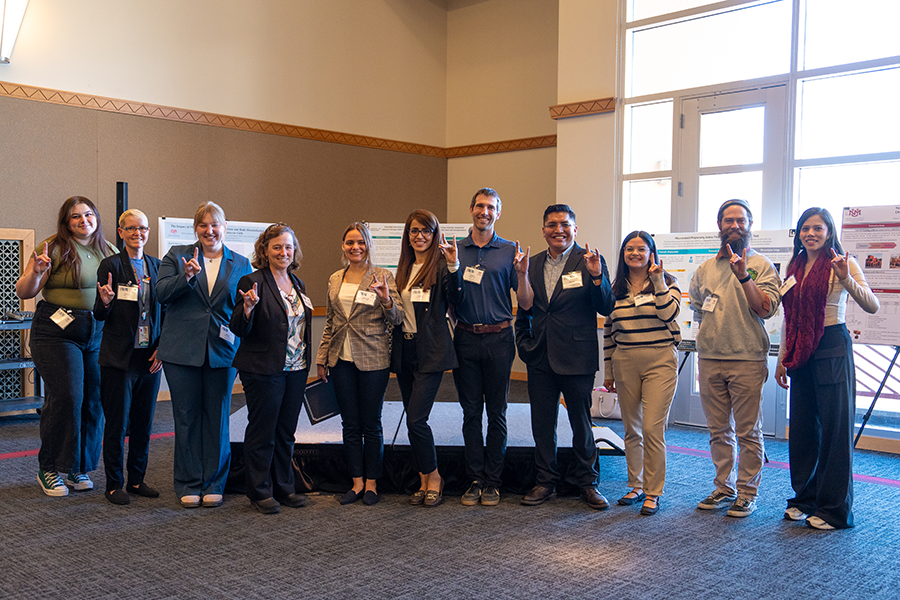The Graduate Poster Showcase 2026

What are the benefits of participating?
You will gain valuable experience in writing a professional abstract, and preparing a 48” wide x 36” tall poster that conveys your work in a concise and understandable way suitable for a broad audience. Excellent posters are not cluttered yet have sufficient graphics and text to get the message across. Students will also experience interacting with experts and the general community in explaining their work and fielding observer questions.
At least three judges will interview presenters and provide feedback. Aside from the $100 stipend to offset poster preparation costs to all participants, prizes will be awarded to be the top presentations based on judging criteria.
Watch for announcements towards the end of the fall semester 2025 and the beginning of spring semester 2026 to apply.For more information, contact Dr Gannon wgannon@unm.edu.



2025 Graduate Poster Showcase Finalists
2025 Graduate Poster Showcase Winners:
1st place - Hamideh Shojaeian
2nd place - Samuel Coulter
3rd place - Adrianna Fragozo
Even though poster sessions at academic conferences have traditionally featured projects from STEM and the social sciences, humanities poster sessions are on the rise. UNM’s Graduate Showcase is part of this trend.
One of the unique features of the Graduate Showcase is the juxtaposition of disciplines. Too-often, the humanities are pushed to the margins in favor of STEM and social science fields, but at the Graduate Showcase, we want to spotlight all academic disciplines on campus. Projects from STEM, the humanities, and the social sciences are displayed side by side. The Graduate Showcase presents an opportunity for the humanities to step out from the shadows and highlight the rich, vital bodies of research currently being produced.
Even though some students may experience trepidation about research poster design, don’t worry. In the "Poster Design Aids" section below, we offer an array of design aids to assist students in the construction of their posters, including resources targeted specifically to the humanities. Additionally, the Graduate Resource Center will offer a poster design workshop in mid-October. Just remember, humanities posters do not have to follow the design rules that govern STEM posters.
To summarize, here’s why should humanities students should participate in the poster showcase. By participating, students can:
- Gain new skills in design and digital humanities
- Make the case for why humanities research matters to a broad audience, including academic and non-academic circles
- Enjoy the rich intellectual energy of interdisciplinary engagement
- Learn how to translate complicated humanities work into a succinct, cogent display of knowledge
Looking for tips, tricks, and software for designing your poster? Check out the suggestions below!
- Designing Research Posters (Colin Purrington)
- How to Create a Better Research Poster in Less Time
- This video (with its accompanying templates) suggests a new concept for designing research posters, which is currently gaining traction in academia
- To read an NPR article about this new method, click here
- How to Create a Research Poster (NYU Libraries)
- How to Make a Research Poster (Tufts Libraries)
- Poster Guide for Students(University of Illinois Chicago)
- Posters, Presentations & Science Writing: Design (University of California Berkeley)
- Tips for Arts and Humanities Poster Design (University of York)
- BEST: Adobe InDesign or Illustrator (available for free use through UNM Adobe Creative Campus)
- Microsoft PowerPoint (available for free use through UNM IT)
- Canva (requires paid membership to customize your poster size to conference regulations)
